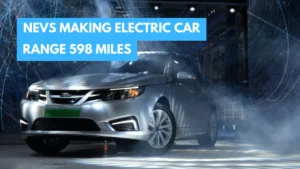Introduction:
In a groundbreaking move set to reshape the electric vehicle (EV) landscape across the Asia-Pacific region, Singapore-based startup Charged Asia has secured a substantial investment of up to $40 million from Geo Energy, a prominent energy company listed on the Singapore Exchange (SGX). This strategic collaboration is poised to accelerate the adoption of sustainable transportation solutions and foster an energy transition across Indonesia and Southeast Asia. The infusion of growth capital, facilitated through a blend of convertible loans and share placements, is projected to close by the end of the upcoming year.
Charged Asia’s Expansion Plans:
Charged Asia, founded in 2022, has swiftly gained recognition for its innovative approach to EV manufacturing and commitment to driving a greener future. With the freshly secured funding, the company is poised to significantly expand its operations. The primary focus will be on further penetrating the Indonesian and Southeast Asian markets, including emerging economies such as Vietnam. This expansion aligns seamlessly with the broader objective of supporting regional energy transition endeavors.
Geo Energy’s Strategic Investment:
The strategic partnership between Charged Asia and Geo Energy holds immense promise due to the latter’s extensive roots in Indonesia. Leveraging its well-established presence, Geo Energy is poised to facilitate Charged Asia’s expansion efforts, particularly into Indonesia’s main islands. This collaboration is anticipated to position Charged Asia as a pivotal player in the burgeoning EV sector within the Asia-Pacific region.
Geo Energy’s Vision
Geo Energy’s investment in Charged Asia signifies its dynamic shift from a conventional energy company to a key contributor to the EV ecosystem. As Geo Energy endeavors to extend its global footprint and meet crucial environmental, social, and governance (ESG) targets, its partnership with Charged Asia emerges as a strategic pathway. Together, the entities are setting the stage for sustainable transportation solutions that align with international sustainability goals.
Zero-Energy Production and Versatile Offerings
At the core of Charged Asia’s operation is its cutting-edge “zero-energy” production facility, which reflects the company’s steadfast commitment to minimizing its carbon footprint. Presently, Charged Asia boasts an impressive portfolio featuring three distinct models of two-wheeler electric vehicles, each catering to diverse price points. This versatility positions the company to tap into a wider consumer base and effectively contribute to the EV revolution.
Charged Asia’s Goals
Charged Asia’s aspirations extend far beyond conventional targets. The company envisions the sale of a staggering 10 million electric motorcycles across the Asia-Pacific region within the upcoming decade. This ambitious objective underscores the scale of its commitment to driving sustainable mobility and championing the broader adoption of electric transportation.
The Indonesian Market and EV Adoption
Indonesia’s strategic significance in the global EV landscape is undeniable. With abundant nickel reserves and ambitious plans to become a leading EV production hub, the country’s commitment to sustainable mobility is unwavering. As Charged Asia joins forces with Geo Energy to amplify its presence, Indonesia’s two-wheeler vehicle market emerges as a fertile ground for EV adoption.
Scalability and Capital Requirements
While the EV sector in Indonesia is burgeoning, scalability remains a prominent challenge due to the substantial capital demands associated with production expansion. However, with Geo Energy’s substantial investment in Charged Asia, the prospects for overcoming these challenges are brighter than ever. This collaboration not only injects vital funds into the venture but also establishes a powerful synergy that can address the industry’s growth constraints.




